Dungeons and Dragons is a tabletop fantasy roleplaying game that has captured the imaginations of players for almost 50 years. The rules of D&D have evolved and changed drastically since the game’s inception. Over the decades, the game has been simplified and streamlined in order to lower the learning curve for new players to enter the world of Dungeons and Dragons for the first time.
Despite these changes, many new players still find it challenging to pick a class for their new character. For those who can’t seem to make up their minds, here’s an overview of the options available for DnD classes in D&D 5e.
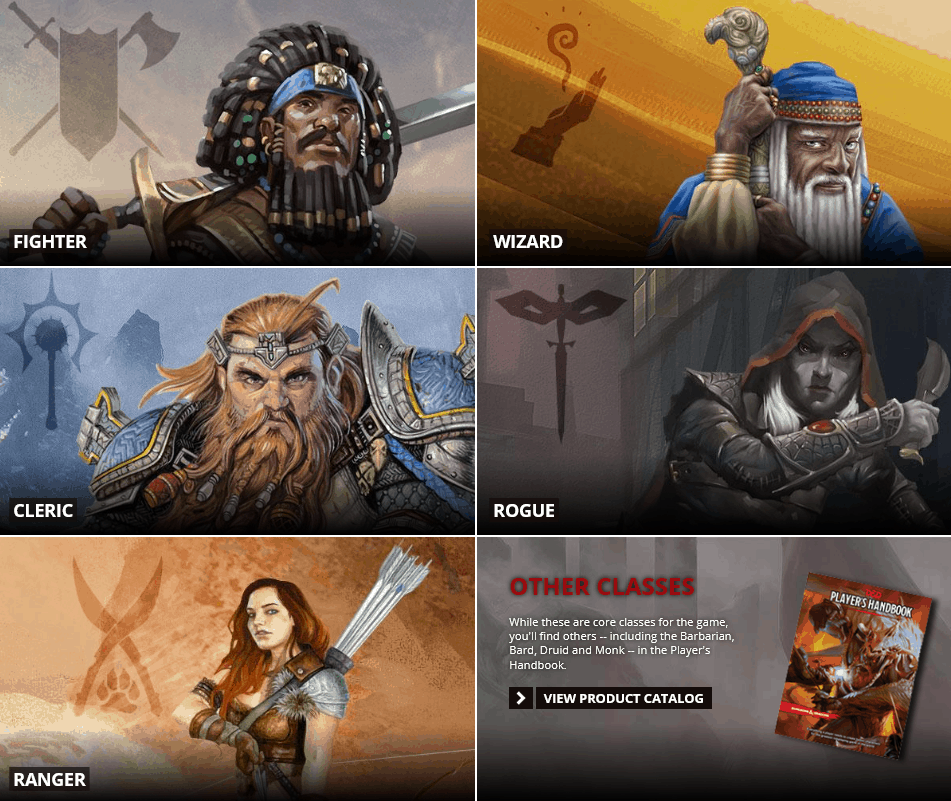
The History of D&D Classes
Through all the iterations of the D&D, a few fundamental concepts have remained consistent for all versions of the role-playing game (RPG). Dungeons and Dragons has always involved creating a character by determining a race, class, and alignment, with gameplay dictated through rolling dice.
The original version of the game had only three classes available to play:
- Fighting-man
- Magic-user
- Cleric
Today, the list of classes in D&D 5E has expanded significantly. However, the fundamental categories of weapons-users, magic-users, and healers still persist to this day.
What Are the Current D&D Classes?
D&D classes have come a long way since the inception of the game. Nowadays, you can choose from thirteen different classes from published sourcebooks. While each class offers something new to players, classes in Dungeons and Dragons can still broadly be classified into the following:
- Damage dealers
- Damage absorbers (also known as tanks)
- Healers
An ideal D&D party has a balanced mix of all of these categories. Here is a brief overview of the various classes to choose from when building a character for your next Dungeons and Dragons campaign.
Barbarians
This class is one of the easiest to play for beginners, since Barbarians are able to deal large amounts of physical damage while being able to take large amounts of damage in return. Barbarians also lack access to magic, which can be tricky for new players to grasp. That being said, the class of Barbarian is by no means a simple or boring one.
Class Features
Barbarians have a fantastic set of class features available to them:
- Rage
- Unarmored Defense
- Danger Sense
- Reckless Attack
- Primal Path
- Extra Attack
- Fast Movement
- Feral Instinct
- Brutal Critical
- Relentless Rage
- Persistent Rage
- Indomitable Might
- Primal Champion
The defining feature of Barbarians is rage, which lasts an (in-game) minute and allows your character to gain a bonus to damage rolls and resistance to bludgeoning, piercing, and slashing damage, as well as an advantage on strength checks and saving throws. The ability grants both increased damage and increased durability, making it an exceptional class feature to play with.
The rest of the Barbarian’s class features are also consistently useful. Overall, the Barbarian class has a lot of excellent features early on, an important distinction to make since most D&D campaigns don’t actually take characters up to level 20.
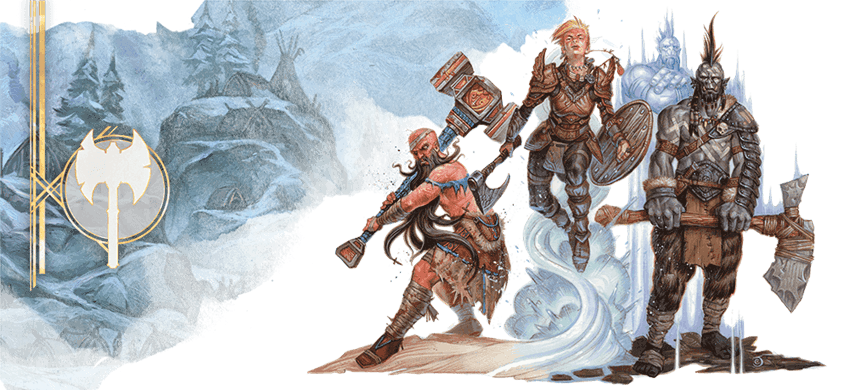
Primal Path
The Primal Path for your Barbarian, chosen at 3rd level, dictates the type of Barbarian you want to play. There are a large variety of paths that have been added through sourcebooks through the years.
These include the following:
Each Primal Path offers something different for your Barbarian. If you’re just starting, however, options from the Player’s Handbook (such as Berserker) are classics that rank as some of the best Primal Path options while retaining simplicity in gameplay.
Bards
Bards epitomize the role of the party face: charming, charismatic, and entirely duplicitous. This class relies on wit and a silver tongue to escape tricky situations, rather than powerful spells or swords.
Bards tend to be less of a combat-oriented class and more prone to being squished by orcs, but Bards are by no means weak. Divines help the poor sod who offends a Bard. He might just find himself in a position of, shall we say… indentured friendship.
Class Features
The Bard gains the following class features as they level up:
- Spellcasting
- Bardic Inspiration
- Jack of All Trades
- Song of Rest
- Bard College
- Expertise
- Font of Inspiration
- Countercharm
- Magical Secrets
- Superior Inspiration
As full spellcasters, Bards gain access to a variety of spells and cantrips. These include useful additions to a Bard’s deceitful repertoire (such as Prestidigitation and Suggestion), to healing spells (like Healing Word), to simply iconic tricks (like Vicious Mockery). Bards also don’t need to prepare spells, removing an additional layer of complexity for new players.
The primary class feature for Bards is Bardic Inspiration, which allows Bards to buff ability/attack rolls for their allies or themselves with an additional dice that increases in size as your Bard gains levels. The rest of the class features are generally useful and focus on utility, such as Jack of All Trades and Expertise increasing proficiency bonuses.
Bard College
Your choice of Bard College for your character, occurring at 3rd level, determines the type of Bard you want to play. These are the published Bardic College options available to pick from:
Some Bard colleges excel in persuasion and using Bardic abilities to affect the decisions of others, while other darker colleges train Bards to use their verbal talents to strike terror and pain into the hearts of their enemies. Some Bardic colleges even focus on melee combat. Be sure to pick a Bardic college that supplements your play style and character aesthetic.
Clerics
Clerics are one of the most versatile classes, and depending on which divine domain you choose, Clerics can operate as warriors, spellcasters, or healers. However, since Clerics rely on a divine patron for their powers, Clerics that stray from the path of their deity and offend their patron may find themselves quickly stripped of their powers.
Class Features
The Cleric’s class features are as follows:
- Spellcasting
- Divine Domain
- Domain Spells
- Channel Divinity: Turn Undead
- Destroy Undead
- Divine Intervention
As divine spellcasters, Clerics have access to an assortment of magic; however, they must pray in the morning and prepare their spells for the day before casting any of them. This allows Clerics to swap out their spells depending on the needs of the day, but it also limits Clerics to only the spells they’ve prepared for that day.
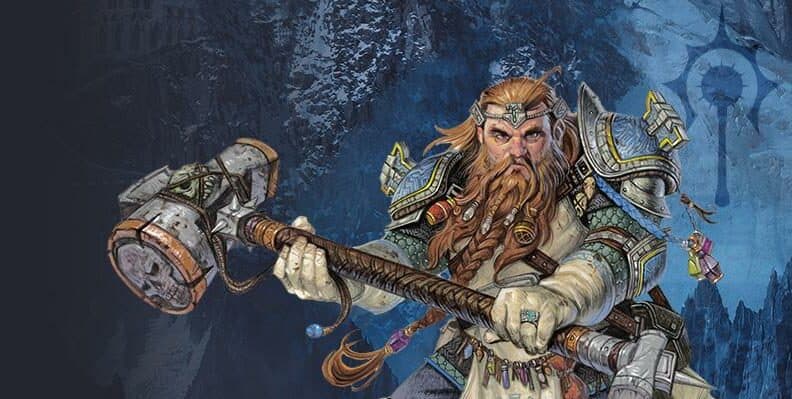
Divine Domain
Clerics are the servants of gods and so their powers differ drastically depending on which kind of god they serve. The possible domains of gods a Cleric can draw power from are listed below:
Different domains offer vastly different playstyles for Clerics. Life domain Clerics are the best healing class in the game when used correctly, whereas war domain Clerics make fantastic physical fighters, and Trickery domain Clerics even make effective party faces. Divine domains affect a Cleric’s playstyle more than most subclasses, so be careful to choose wisely.
Druids
Druids are magic-users that draw their powers from the natural world around them. Like Clerics and Rangers, Druids use Wisdom as their spellcasting ability, using their knowledge of the hidden secrets of the wild to compel various magical effects. Druids can make powerful utility/support characters, or they can take on an effective combat role using Wild Shape.
Class Features
Druids gain a significant amount of their class features from their Druid Circle rather than their generic class features, but still retain a good deal of offerings early on. Druid class features are detailed below:
- Druidic
- Spellcasting
- Wild Shape
- Druid Circle
- Timeless Body
- Beast Spells
- ArchDruid
Druid spells contain a variety of fantastic options available only to Druids, including excellent area-of-control spells such as Entangle, and iconic healing options such as Goodberry. Like other Wisdom-based casters, however, Druids need to prepare spells in order to cast them. They take a moment every morning to attune themselves with the natural world around them.
Wild Shape is an excellent ability that increases offensive capability, grants unique animal abilities, and offers additional hit points. The feature is particularly impressive when combined with the Circle of the Moon.
Druid Circles
Which Druid Circle you pick determines whether or not you want to play an offensive, support, or healing Druid. These are the options available in official sourcebooks:
Of the Druid Circles, the most iconic is by far the Circle of the Moon, which grants additional Wild Shape abilities at 1st level, resulting in one of the most powerful classes at early levels. Other circles function well as support or control characters, such as Circle of Spores and Circle of the Shepherd, while Circle of Dreams and Circle of Stars provide some additional healing abilities.
Fighter
Fighters are a damage-dealing class through and through, with a versatile range of armor and weapon options as well as a fun and dynamic ability mechanic to augment their attacks. In exchange, most Fighters lack any access to magic, with the exception of the Eldritch Knight martial archetype.
Class Features
While Fighters gain a significant amount of abilities from their Marital Archetype, the core abilities that allow a Fighter to perform their party role are found in their general class features.
- Fighting Style
- Second Wind
- Action Surge
- Martial Archetype
- Extra Attack
- Indomitable
The Fighter class receives a large number of useful abilities at low levels. The Fighting Style, depending on the one which one you choose, can be an incredibly useful bit of early-on specialization that helps to guide the direction in which you develop your Fighter.
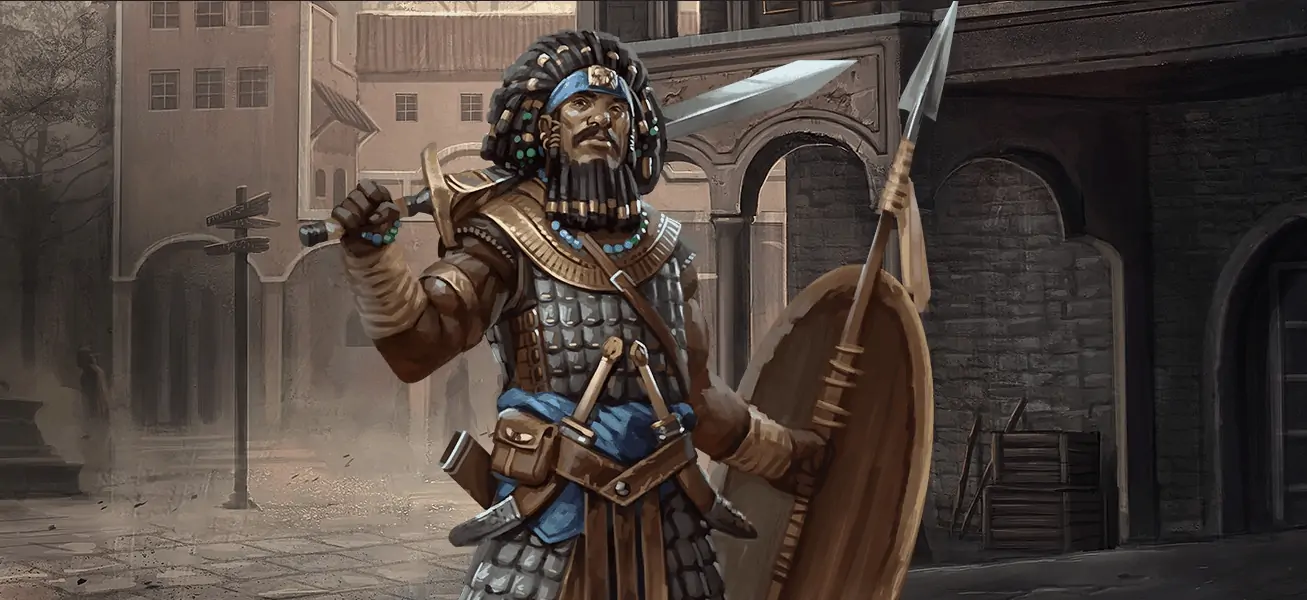
Martial Archetype
A Fighter’s martial archetype dictates certain unique abilities and flavors that can complement the Fighter’s backstory and aesthetic. In addition, certain archetypes, like Arcane Archer, allow for specific playstyles, while others, like Eldritch Knight, open avenues to magic and additional abilities unobtainable by Fighters otherwise.
Here is a list of published martial archetypes for Fighters:
- Arcane Archer
- Banneret
- Battle Master
- Cavalier
- Champion
- Echo Knight
- Eldritch Knight
- Psi Warrior
- Rune Knight
- Samurai
Monk
Practically living weapons, there’s no better hand-to-hand combatant than the Monk. While most Monks forgo the use of weapons, those that don’t are even more deadly, using their weapons as if they were living extensions of their own bodies. Although Monks lack access to magic, their ki ability more than makes up for not having spells.
Class Features
Monks have a huge range of class features, gaining additional abilities at almost every level. Monk class features focus mostly on hitting enemies hard and getting out of danger quickly.
These features include:
- Unarmored Defense
- Martial Arts
- Ki
- Unarmored Movement
- Monastic Tradition
- Deflect Missiles
- Slow Fall
- Extra Attack
- Stunning Strike
- Ki-Empowered Strikes
- Evasion
- Stillness of Mind
- Purity of Body
- Tongue of the Sun and Moon
- Diamond Soul
- Timeless Body
- Empty Body
- Perfect Self
Most Monk class features are generally useful, and being able to gain new abilities for every level up until 7th level, makes playing Monks an incredibly fun and adaptive experience. Dexterity is by far the most important stat for Monks, with Strength only being used for saving throws.
Ki is the central mechanic for Monks, allowing players to augment their Monks abilities when necessary, either dealing more damage or shielding themselves from harm. Ki makes playing Monks a little more interesting than “I punch the bad guy really hard in the face,” and keeps combat feeling fresh and dynamic.
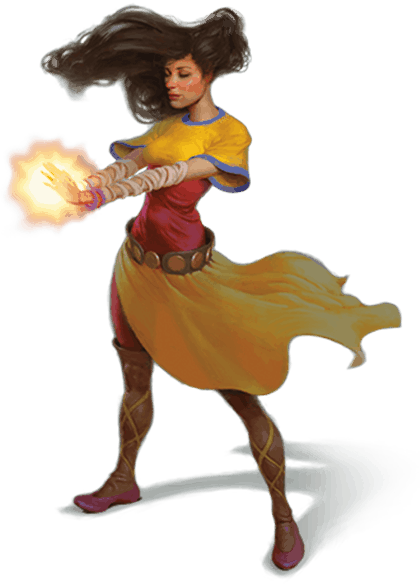
Monastic Tradition
Monastic traditions grant Monks additional powers and flavor for backstories, allowing complex and interesting character creation. These are the current published monastic traditions:
Paladin
Paladins are strong physical warriors, but gifted with divine powers to aid them in their quest. These powers are given on the whims of the divines. However, and Paladins that break their oaths to their gods may quickly see that divine favor withdrawn.
Related read: DnD Paladin Oaths Guide.
Class Features
Paladins are a unique class, combining attack strength, durability, and healing in one. While Paladins are not the most powerful attackers, the most sturdy tanks, or the greatest healers, they are versatile in a way that few classes can claim to be.
These unique traits are apparent in the features granted by the Paladin class, listed below:
- Divine Sense
- Lay on Hands
- Fighting Style
- Spellcasting
- Divine Smite
- Divine Health
- Sacred Oath
- Extra Attack
- Aura of Protection
- Aura of Courage
- Improved Divine Smite
- Cleansing Touch
Paladins receive access to a large portion of their abilities at early levels, allowing Paladins to shine right as the adventure begins. Most of the Paladin’s class abilities are excellent, coming in handy in a wide variety of scenarios. Lay on Hands is practically as close to free healing as you can get in D&D, with a pool of HP that scales well as you level up.
Paladins also get access to a limited amount of spells, which they must prepare in the same way that a Cleric does. Paladin spells generally augment their physical attacks or defensive abilities, allowing for a bit of extra damage when it counts.
Sacred Oath
A Paladin’s sacred oath is a pledge to their god to follow a divine path or set of ideals. A Paladin’s abilities increase drastically after taking a sacred oath, but straying from a Paladin’s sacred oath can have severe consequences, as well.
Here are the published sacred oaths available from sourcebooks:
While sacred oaths do not tend to fundamentally alter the way the Paladin class is played, certain sacred oaths allow for mild specialization among the Paladin class. Choose a sacred oath that suits your character and their backstory, as well as your playstyle.
Ranger
Rangers are able to take advantage of a variety of weapons and use means of stealth to strike their prey in one fell swoop, be it beast or man. While Rangers lack the armor or durability of other, sturdier classes, their skills of tracking and hunting (and killing) are second to none.
Class Features
Note: The features listed here use the variant-Ranger class feature list from Tasha’s Cauldron of Everything, as the original Ranger class as written in the Player’s Handbook is widely considered to be underpowered in comparison to the other classes.
- Favored Foe
- Deft Explorer
- Fighting Style
- Spellcasting
- Primal Awareness
- Ranger Conclave
- Extra Attack
- Land’s Stride
- Nature’s Veil
- Vanish
- Feral Senses
- Foe Slayer
Rangers’ abilities are themed around dealing extreme damage on single hits and hiding in plain sight. Rangers receive a significant amount of their abilities at early levels, and are able to cast spells. Ranger spells tend to augment their natural abilities and enhance their connection with nature.
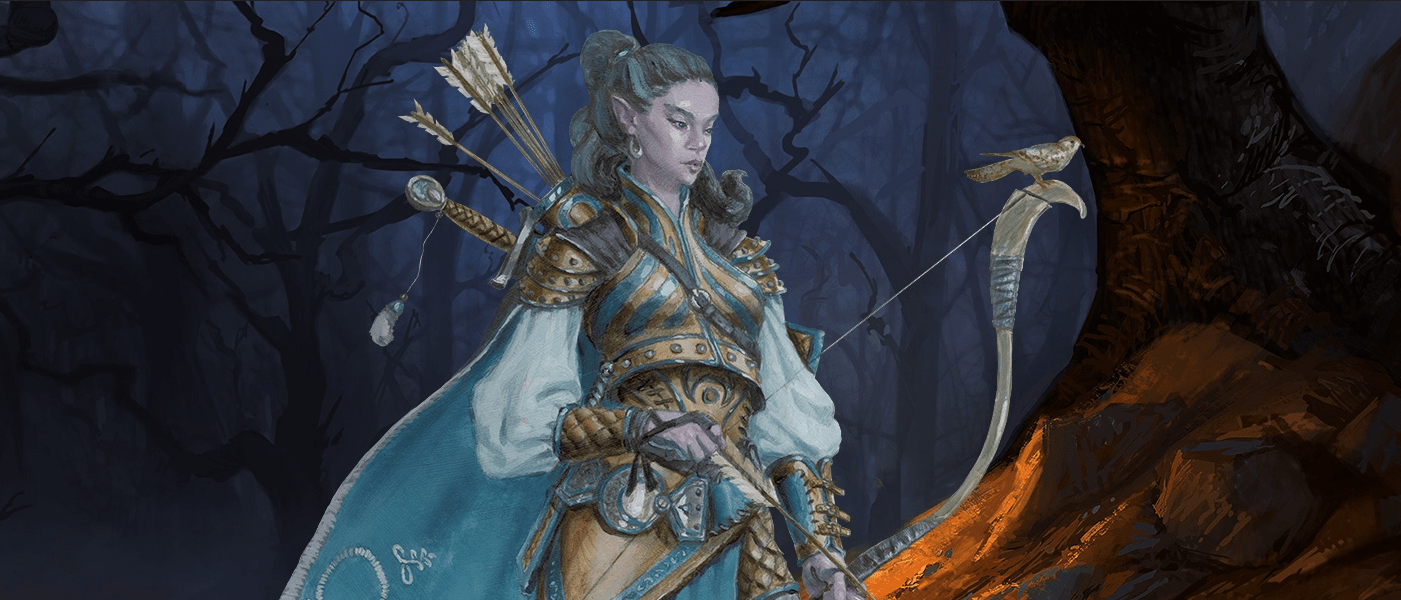
Ranger Conclaves
Ranger Conclaves provide training and ideals for your character, granting additional abilities.
While a choice of a Ranger conclave usually does not fundamentally alter the playstyle for the class, conclaves do allow characters different aesthetics and abilities.
Rogue
Quiet, hidden, and deadly, Rogues are most at home hiding in the shadows, just waiting for an opportunity to strike. While Rogues generally lack magic (other than Arcane Tricksters) and are much more vulnerable to attacks than other classes, they remain one of the best damage dealing classes in the game.
Class Features
Rogues usually have a large repertoire of skills, picked up over years of living in the criminal underground. They specialize in hiding in the dark, before striking with deadly aim. They’re also charming, with a quick wit and silver tongue that they use to bamboozle others for their own personal gain.
These traits are reflected in the class’s features:
- Expertise
- Sneak Attack
- Thieves’ Cant
- Cunning Action
- Roguish Archetype
- Uncanny Dodge
- Evasion
- Reliable Talent
- Blindsense)
- Slippery Mind
- Elusive
- Stroke of Luck
The bread and butter for the Rogue is Sneak Attack, which allows the Rogue to deal extremely high damage as long as the player has the advantage, usually through a surprise attack. Expertise allows Rogues to perform a large variety of skills with proficiency while Cunning Action helps the Rogue stay alive early on until they can gain some additional health points.
Roguish Archetype
At 3rd level, your Rogue is able to choose a guiding path to hone their abilities towards. In general, roguish archetypes largely provide flavor for characters, but they also allow Rogues to specialize. These are the published choices for roguish archetypes:
Sorcerer
Sorcerers are more delicate than physical fighters and usually require a tank or two in the party to keep enemies off them, but they are able to unleash devastating magical attacks on their enemies unparalleled by weapons-users.
Class Features
Born magic-users, the Sorcerer’s class features augment and hone their natural magical abilities. These features are listed below:
- Spellcasting
- Sorcerous Origin
- Font of Magic
- Metamagic
- Sorcerous Restoration
The core feature that makes up the Sorcerer class is Font of Magic, which grants sorcery points that players can use to augment their magical abilities and create spell slots. Sorcerers also receive the Metamagic feature, which allows players to add various effects onto the spells they cast. The true primary ability of the Sorcerer class is access to a large amount of spell slots at every level and a huge repertoire of spells.
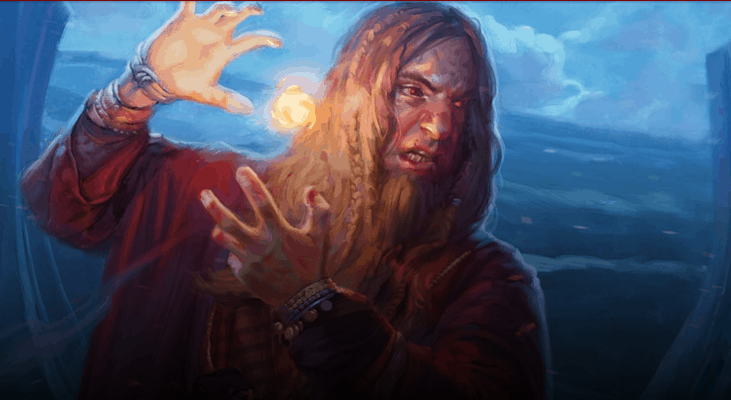
Sorcerous Origin
Your Sorcerer’s sorcerous origin is the reason why they’re born into magic. Depending on the source of that magic, a Sorcerer’s abilities will vary. Sorcerous origins are largely just flavor unless damage types really matter in your campaign, but they offer a variety of backgrounds for different backstories and allow the player some specific talents.
These are the origins currently published in sourcebooks:
Warlock
Once simply ordinary mortals, Warlocks are individuals who have made a pact with some being of power in exchange for otherworldly powers. Although Warlock patrons are usually malevolent, not all Warlocks are evil, resulting in conflicts with their patrons down the line.
Class Features
- Pact Magic
- Eldritch Invocations
- Pact Boon
- Mystic Arcanum
- Eldritch Master
Warlocks gain their power through Pact Magic rather than innate Spellcasting like other magic-users, allowing them to refresh their spell slots after short rests. In exchange, Warlocks have fewer spell slots than other magic-casters and tend to rely on cantrips.
Read our full Warlock 5e Guide.
Otherworldly Patron
Which patron you choose for your Warlock affects the spells they have available, as well as various unique abilities. Choose a patron that fits your character and their backstory.
Wizard
The Wizard class is defined by the huge repertoire of spells they have available to them. Wizards rarely have much physical prowess and if caught without their spellbooks make rather pitiful opponents, but make up for it with unmatched magical supremacy and intelligence.
Class Features
The Wizard’s class features are listed below:
- Spellcasting
- Arcane Recovery
- Arcane Tradition
- Spell Mastery
- Signature Spells
Unlike other classes, Wizards don’t have many additional class features other than Spellcasting, which they perform with greater versatility than any other class. Wizards can learn basically any spell, but must do so through the study of a spell tomb found in the world of Dungeons and Dragons. They’re also one of the few classes that use Intelligence as a Spellcasting ability, and require preparation to cast spells.
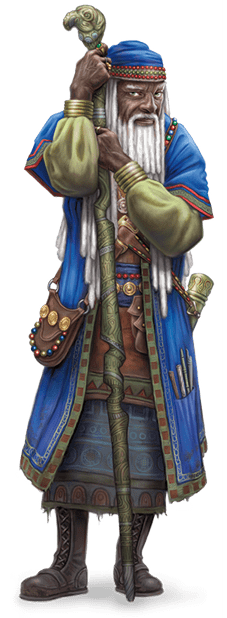
Arcane Tradition
The schools of magic available to Wizards are listed below:
- Abjuration
- Bladesinger
- Chronurgy
- Conjuration
- Divination
- Enchantment
- Evocation
- Graviturgy
- Illusion
- Necromancy
- Order of Scribes
- Transmutation
- War Magic
Wizards can choose to specialize in a school of magic starting at 2nd level. This specialization in an arcane transition not only allows the Wizard to more easily learn spells from that school, but it also grants unique abilities pertaining to that school of magic.
Races Versus Classes: What’s the Difference?
One of the common mistakes new D&D players make is confusing their character’s race with their class. To help clear things up a bit, here’s the difference:
- A character’s race pertains to the abilities a character has due to their species, whereas a character’s class pertains to the abilities a character has due to their training.
- An example of a race is Elves, Humans, or Dwarves, whereas a class is if a character has trained to be a Rogue, a Bard, a Ranger, and other similar roles.
- Your character’s class will help better define its role in your party and what its capabilities are, whereas its race can give traits and increased ability scores.
While one term describes the innate circumstances of a character’s birth, the other describes the skills and abilities a character has trained to acquire. Classes are also distinct from backgrounds, which ascribe skills to a character based on lived experience.
How To Choose A D&D Class
When choosing a D&D class, it’s important to think about the kind of character you want to make, as well as the kind of playstyle you would prefer as a player. Loosely, the classes in D&D can be sorted in a few types of playstyles, with minor overlap depending on subclass:
- Ranged Spellcasters: Warlocks, Sorcerers, Wizards
- Melee Spellcasters: Clerics, Paladins, Druids
- Ranged Warriors: Ranger, Fighter, Rogue
- Melee Warriors: Fighter, Monk, Barbarian, Paladin, Rogue
- Tanks: Barbarian, Fighter, Paladin, Cleric
- Healing/Support: Cleric, Bard, Druids
You should also consider the subclasses of each class and decide which one would best fit the flavor and aesthetic of the character you want to build.
Our Favorite Classes
While each player’s character preferences are different, we’ll share a few of our own personal favorite classes/subclasses, just in case you share our tastes. Maybe these will help inspire you for your own character idea.
- Fey Wanderer Ranger: The class features of a Fey Wanderer Ranger are perfect for the role of Party Face, while still remaining fun to play in non-diplomatic situations.
- Circle of Moon Druid: We usually recommend this class to beginners to D&D, because it is by far one of the most powerful classes in the game at early levels. It’s always just remarkably fun to play — who doesn’t love turning to a dire wolf and causing havoc?
- Fiend Warlock: The Fiend-patron Warlock is another fantastic class for beginners, since it allows Warlocks to access a fantastic list of spells and features that help keep the player alive for long enough to obliterate their opponents.
Frequently Asked Questions
Question: How do classes work in D&D?
Answer: During character creation, you choose a class that fits your character and add their features and bonuses to your character sheet. As your character increases in level, you’ll unlock more class features, so be sure to remember to update your character sheet!
Question: Which D&D class is the best?
Answer: There is no one class that outshines the rest. All of the classes in D&D have advantages and disadvantages; it’s up to the player to explore and see which one suits your preferences. Try a variety of classes, and you’ll soon find which ones you love playing the most.
Question: What are class features in D&D?
Answer: Class features are the specific abilities and powers that a class grants your character. Features are unlocked as your character progresses in level, so be sure to keep your character sheet up to date!
Question: Is Necromancer a class in D&D?
Answer: No. While in previous versions of D&D there was a specific “Necromancer” class, in D&D 5E, that class has been removed in favor of the School of Necromancy Arcane Tradition for the Wizard class.
Question: Can my character have more than class?
Answer: It depends. Multiclassing is an optional ruleset in D&D 5E, so it depends on whether or not your dungeon master permits multiclassing rules to be used.
Final Thoughts: The Best D&D Class For You
As a seasoned D&D player, there is no one answer to which class you should choose for your next D&D character. The magic of D&D is that players are able to experience a wide and diverse landscape of different character combinations and stories. While you can keep party balance in mind, choosing a D&D class is ultimately about picking a character that’s fun for you to play.
If this is your first foray into D&D, however, then we’d have to say our favorite class to play would have to be the druid. Because it’s so beginner-friendly, it’s an incredibly fun one to start out with. Once you feel more comfortable navigating D&D, though, you can then start to branch out with other classes.
And remember: playing D&D is highly addictive, so use this new hobby wisely. Once you start playing, you won’t want to stop — and we sincerely hope you enjoy it as much as we do!
Want to be creative and create your own Homebrew classes? Continue reading our complete Homebrew Classes Guide.
